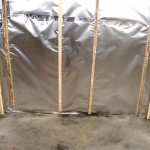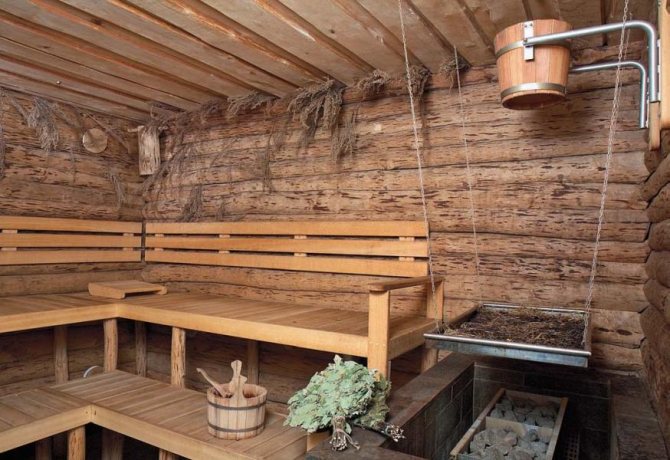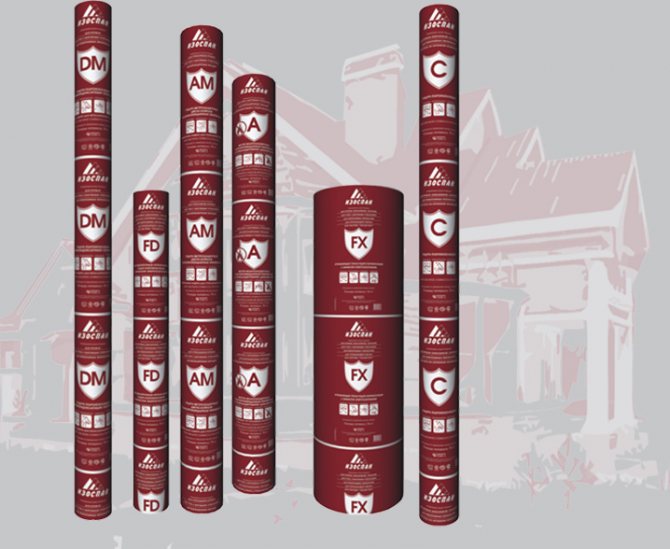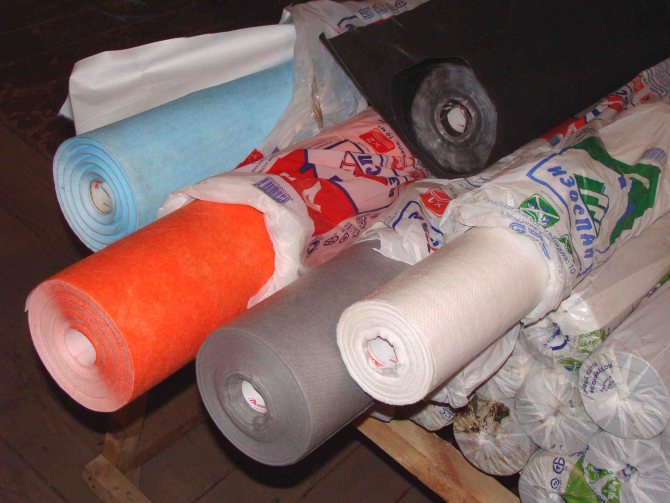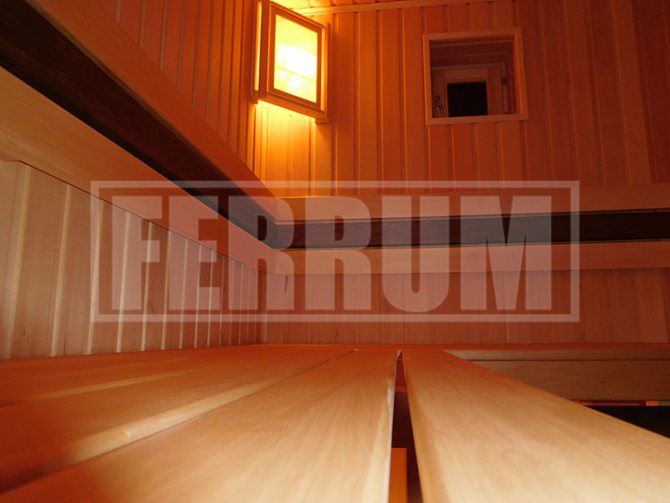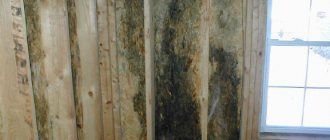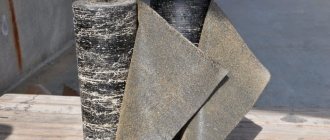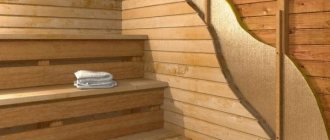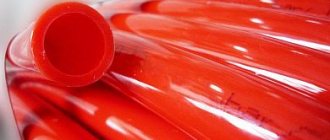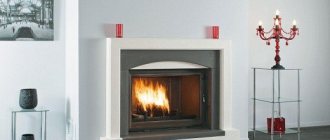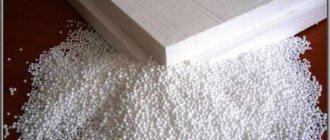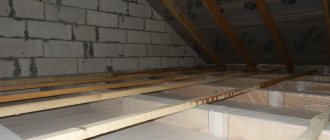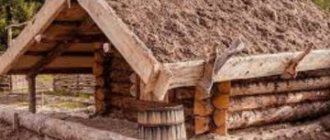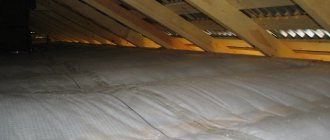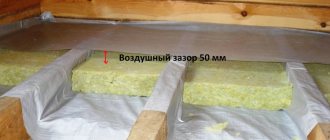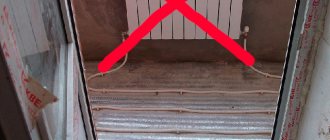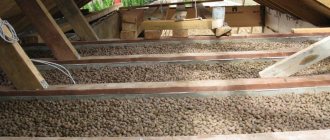Last time we talked about how best to heat the bathhouse in winter: with electricity, gas or from the stove. Today we will help you figure out what kind of vapor barrier for a bath is and in what situations this or that material is used. During installation, many make, at first glance, insignificant mistakes, which, as a result, lead to rather complex consequences. To avoid them, we will describe different techniques with all the pitfalls that may arise in the work.
Why use vapor barrier materials
To create conditions in the steam room with high humidity and temperature requires considerable effort and knowledge. Particular attention is paid to protecting the thermal insulation layer from excessive moisture. Thermal insulation in a bath is usually done with basalt wool. In dry conditions, it retains heat well and is not afraid of high temperatures.
But under the influence of moisture, its thermal insulation properties deteriorate significantly - the bath begins to lose heat. And if, at the same time, the insulation is also affected by frost, then it will very quickly collapse completely. It is for this reason that it is necessary to lay a layer of vapor barrier for the bath.
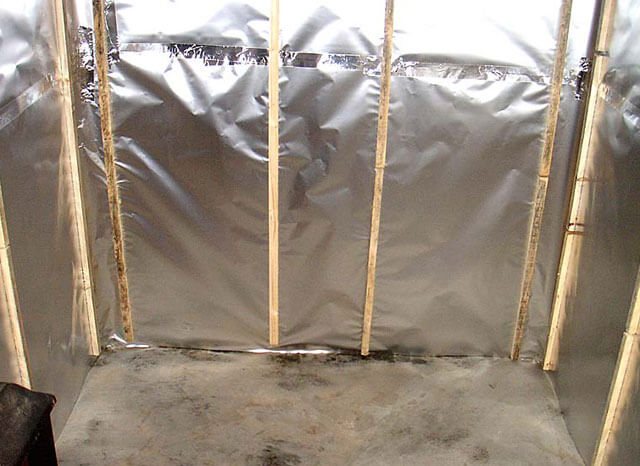
Reasons for the destruction of thermal insulation:
- Due to moisture from inside the room. The Russian bath is distinguished by its rather high humidity, so the steam will always try to get into the rooms adjacent to the steam room. Additionally, to the street, it leaves through a heat insulator. This cannot be allowed.
- Due to moisture due to temperature differences in the steam room, outdoors and in the attic. Condensation appears even before steam is supplied, when the air in the steam room warms up by itself.
Types of foil insulations and regulations for their use ↑
In addition to wall materials, the use of vapor barrier is regulated by its type, or more precisely, by the material from which it is made.
The canvas has two layers - the base and the actual metallized coating. The base of the vapor barrier can be of two types:
The metal coating of insulating panels is also of two types:
It is worth choosing foil insulation based on two factors: the type of room, and the types of the film itself. Cloths coated with polymer-based metal foil are best suited for wet bath conditions. And for dry rooms, you can buy a cheaper version of spraying on paper. Also, the first option, covered with foil, goes well with a warm floor.
How to properly lay a vapor barrier in a bath
For the correct functioning of such material, you need:
- seal seams and joints as efficiently as possible;
- provide a gap between the finish and the foil.
Sealing
Absolute sealing of the insulation seams will most likely not work, but it is quite possible to significantly reduce the amount of steam that will enter the insulation. You will need to lay a foil vapor barrier for a bath with an overlap, somewhere by 5-10 cm.
The joints must be glued with either double-sided or foil tape. You can buy it at any hardware store.
The bath foil insulation must not be damaged. Holes will appear where the film will be fixed with bars. To minimize them, you should use a construction stapler. To achieve maximum quality, at the attachment points, you can go over the top again with tape.
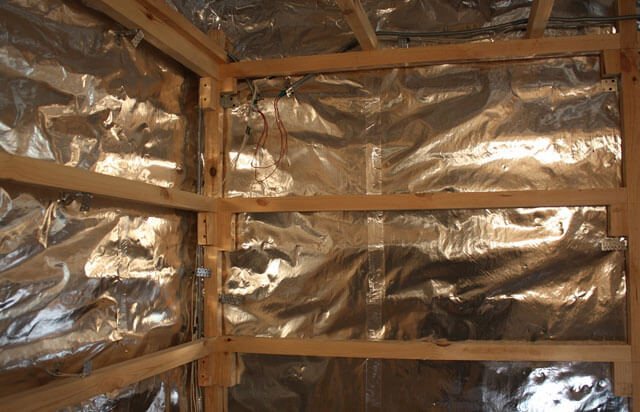

There is another good method of attaching panels - wooden clamping strips. Nails are driven into them every 15-20 cm.In this case, excellent protection against steam penetration is achieved.
Creation of a gap for ventilation
The gap is provided in the process of sheathing the frame for finishing. It should exceed 2 cm. After the bars are selected, they are nailed over the vapor barrier. Next, a wooden lining is already attached. Again, remember to keep the foil completely intact.
As a result, some of the steam that rises up will condense on the vapor barrier film. The formed droplets will immediately be dried by natural air currents passing in the space between the insulation and the clapboard. With the work done correctly, rotting is out of the question.
Recommendations for use
If the walls are frozen, it will worsen the microclimate. As for a wooden house made of timber or logs, foil vapor barrier is perfect for internal insulation. It can also be used for unheated loggias, laying it under the finishing floor covering to make it warmer. When glazing open balconies, when the perimeter is supposed to be finished with sandwich panels that do not emit heat, foil vapor barrier allows you to reduce heating costs.
What material is better to choose
The best steam and waterproofing of the bath will be a foil-based material. It retains steam very well and, at the same time, reduces losses by reflecting heat waves into the room. There are people who are sure that the foil for the bath does not affect anything, and this is an extra waste of money, however, as practice shows, almost everyone uses foil-coated materials when building baths.
Naturally, no one will use a simple thin foil, since it is very easily damaged. Building foil with a paper base is preferable.
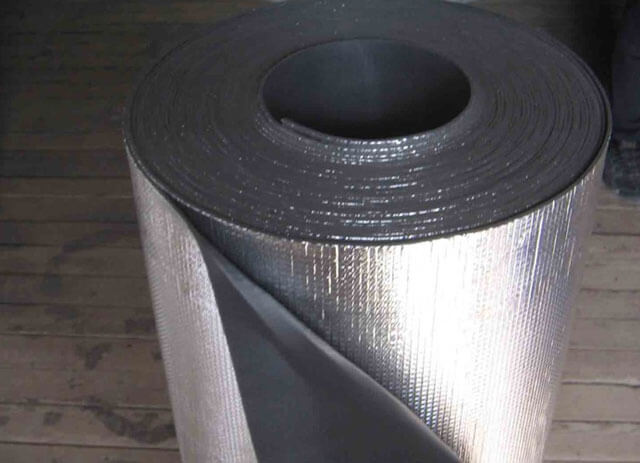

There are several names of such material on the market:
- RufIsol S... Has a moisture-repellent kraft paper base. It can be used at temperatures from -60 to 120 o C.
- Alucraft... This type of material has an additional intermediate layer between the foil and the kraft paper in the form of a polyethylene film.
- Izospan FB... It is a kraft paper with a layer of metallized lavsan. It is not considered a metal, which raises questions about its usefulness in the steam room. However, according to the manufacturer's statement, the material is capable of withstanding temperatures up to 140 ° C.
- Megaflex KF... An analogue of the previous version.
- Yutafol H170 AL... It has a membrane consisting of 4 layers, and such a vapor barrier is suitable for saunas and baths.
There is also a vapor barrier for a steam room in a bath with a fiberglass base. It has increased strength and is able to withstand up to 450 ° C (for a short time up to 600 ° C), which is even an excessive value. Such indicators allow it to be used when insulating chimneys.
Naturally, the cost of such material will be much higher. It has enhanced thermal insulation properties, so it will be possible to save on additional thermal insulation (reduce the layer).
According to the manufacturers' assurances, glass-fiber insulation is environmentally friendly, making it ideal for decorating baths. Although you will have to pay for it three times more than for the material on the basis of kraft paper.
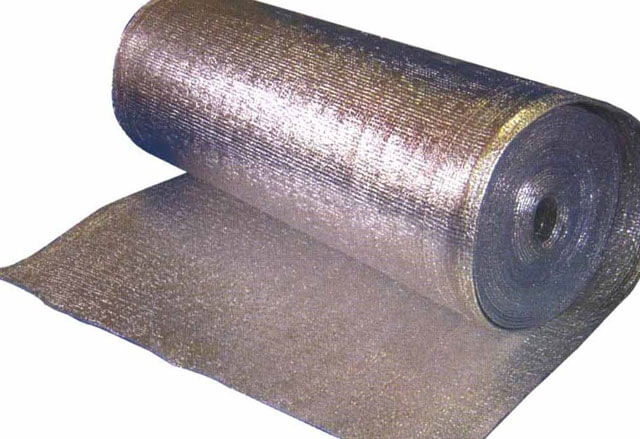

Almost all material on the market is unbranded.
Famous brands include:
- Thermofol ALST - up to 400 о С;
- Folgoizol;
- Armofol - up to 150 ° C, there are variations on a self-adhesive base.
You can also use foil insulation. The installation method is the same as for simple insulation, thus saving on installation time.
There are such brands of foil-clad material:
- Isover Sauna;
- Ursa (Ursa);
- Sauna Butts.
Features of "Alufom" and "Tepofol"
The base is made of polyethylene foam "Aluf", which has a one-sided coating of aluminum foil. The operating temperature range varies from -60 to +100 ° С. The vapor barrier performs the functions of sound, hydro, steam and heat insulation, and also reliably protects against radon. It can be used for thermal insulation of roofs and floors. The wrinkled texture allows you to bend around curved elements of small radii without breaking the coating.
Foamed polyethylene is the basis of "Tepofol", which in different variations has a reflective layer on one or two sides. Temperature effects can vary from -60 to +100 ° C. This vapor barrier can be used for thermal insulation of air ducts, roofs and walls, as well as for underfloor heating.
Foil vapor barrier for a house must be completely safe, such as Izolon, which is environmentally friendly. It is based on foamed polyethylene foam. The vapor barrier is vapor-tight, durable, flexible and soft in the foil layer.
Installation of vapor barrier on the ceiling
When installing a vapor barrier for a bath on the ceiling, watch out for the joints near it - the material should be laid overlapping on the wall to minimize heat loss. You can fix the material with the same double-sided tape, or by pressing it with strips. Thus, maximum reliability will be ensured.
Often, in addition to the main insulation, a layer of moisture-repellent material is also placed in the attic. There it is especially needed, since after rainfall, droplets of moisture can seep through the roof. In any case, it doesn't hurt to play it safe. Only in this case, vapor-permeable waterproofing will be required - it will allow the steam that has penetrated through the insulation to get into the attic and evaporate there.
It is also possible to vaporize the ceiling in the bath using generally available materials. This method involves the filing of ceiling beams with thick, more than 50-60 mm, boards, sometimes unedged. In the attic, a vapor barrier is laid on the boards.
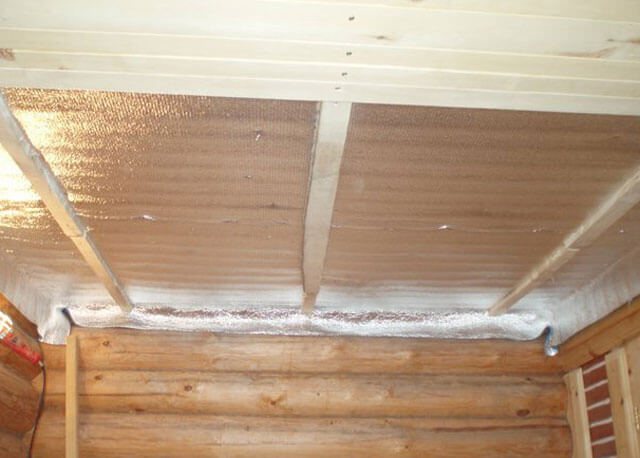

If the budget is tight at all, then cardboard impregnated with linseed oil, waxed paper, glassine, or other material similar in properties can be used as its capacity. The edges and joints are carefully processed, after which a mixture of pasty clay is spread on top. Sometimes straw or sawdust is added there to give the finished material an increased viscosity, and the formation of a minimum number of cracks in the future.
After the clay layer is completely dry, the newly formed cracks are smeared over, and again they wait for the material to dry. Further, they are already moving on to laying the heat-insulating layer, and the ceiling in the steam room itself is sewn up with wooden clapboard.
Installation of a vapor barrier layer in a washing room
In order for the bath to work without problems for as long as possible, it will be necessary to provide a vapor barrier in the washing compartment. It also has excessive humidity, and the temperature readings are much lower, which is far from normal conditions.
Therefore, it is important to provide not only high-quality vapor barrier for the steam room, but also for the washing room. Although in this case, you can do without foil-based material. Diffusion membranes are ideal. They will not allow steam to penetrate into the insulation, and if the membrane from the inside is equipped with a hygroscopic layer, then the moisture in the insulation will be retained.
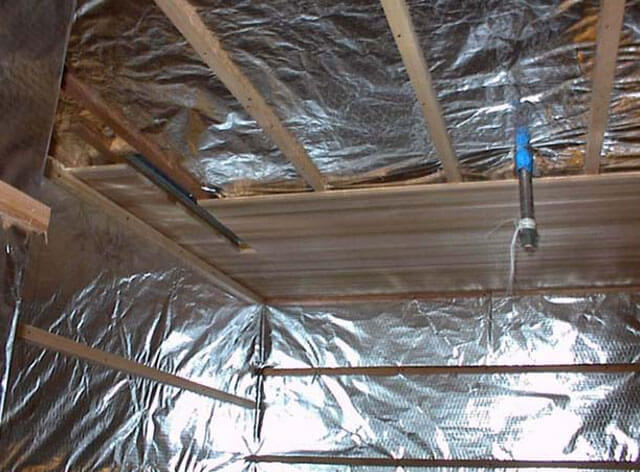

This suggests that if droplets are formed on the rough surface of the membrane, they are retained until they evaporate under the influence of air currents. For this to work, you need to leave a ventilation gap between the finish and the vapor barrier.
Make sure that the vapor barrier is fixed to the surfaces with the correct side - with the foil facing out. Otherwise, the material will collapse very quickly, and it will be necessary to completely replace it, otherwise it will be impossible to use the bath.
What does it look like
Foil vapor barrier is the best choice for a steam room
If this is an ordinary vapor barrier, it is a milky, white, blue film. They are "in a cage" with reinforcing fibers, there are homogeneous ones. They are dense to the touch, they can have surfaces of different textures - smooth and rough. There are vapor barrier membranes. They are non-linear - they have a corrugated surface or with spiked protrusions.
https://www.youtube.com/watch?v=UgKhuOWtGN0
Especially for baths and saunas, a vapor barrier with a heat-reflecting coating is produced: it can be made of foil or metallized lavsan.
Feasibility of installing a vapor barrier layer in other rooms
It is up to you to decide whether or not to install the vapor barrier in other rooms. In the same dressing room, after the bath procedures, the humidity level will definitely rise. If your bath is made of wood, and you do not plan to insulate it either from the outside or from the inside, then you do not need to lay such a vapor barrier layer - drying will be carried out naturally, since the tree breathes and vapors will escape through it. But in this case, it does not hurt to install a normal ventilation system, otherwise problems may also arise over time.
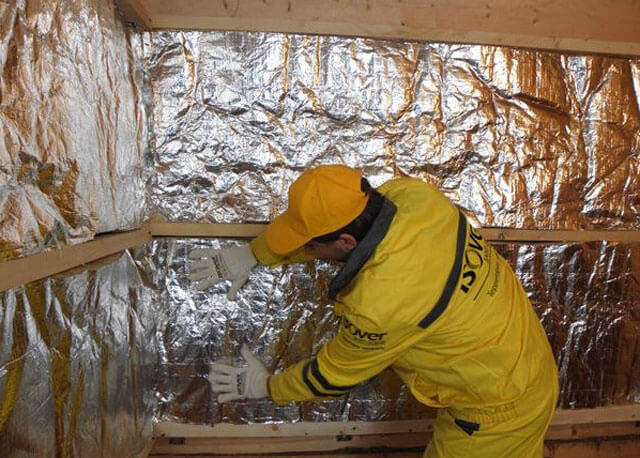

But if your bath was built of foam blocks or bricks, then the vapor barrier must be installed inside the entire bath without fail. In addition, when designing a ventilation system, it should be borne in mind that it will be necessary to dry not only the layers of insulation and steam and gyro insulation, but also the walls, due to the fact that they are made of hygroscopic material.
Consequently, the vapor barrier layer is complemented by a layer of moisture-repellent material. There are two methods of insulating a brick bath, and both of them involve laying a foil material that will act as a vapor barrier and, at the same time, retain heat.
Application area
The described materials are used as a vapor barrier in rooms with high humidity, such as baths and saunas. The film does not melt, does not emit substances hazardous to human health into the air, and can be operated at temperatures up to +120 ° C.
When installing modern steam rooms, the reflective properties of foil vapor barrier are very important, because the sauna should warm up in a short time after the furnace is melted, while energy consumption should be reduced. However, foil vapor barrier is used today not only in the bath.
During the construction of a frame house, more and more often, the usual vapor barrier began to be replaced with foil. With the same heating power, using this approach, it is possible to increase the temperature in the premises by 2 ° C. However, such a material should be used wisely, because it should not be used for internal thermal insulation of buildings made of concrete and brick, as well as other heat-intensive materials.
Laying a vapor barrier on the roof of a bath
To ensure normal vapor barrier in the bath, you need to install it not only on the walls and ceiling, but also on the roof. To do this, a vapor barrier membrane is laid out on a wooden frame in the attic, and insulation and waterproofing on top. And already on it, the installation of the counter-lattice is carried out, followed by the fastening of the roofing material.
In the article above, we examined in detail how to make a vapor barrier in a bath. It is necessary to clearly understand how vapor barrier differs from waterproofing, to understand their characteristics, so that after the completion of all work, unforeseen nuances do not arise. If everything is done correctly, the finished bath will last a very long time.
Installation technology
An integrated approach to insulation, waterproofing and vapor barrier will provide effective protection against moisture and prevent heat loss.
The installation technology provides for the use of modern vapor barrier materials: film, foil and membrane.
Steam insulation of a bath and a sauna is carried out in several stages:
- Preparatory stage.
- Installation of waterproofing.
- Insulation laying.
- Installation of vapor barrier.
- Decorative cladding of surfaces.
Ceiling
In case of excessive exposure to high temperatures and humidity, the ceiling surface first of all needs careful insulation and processing with protective vapor barrier materials.
The vapor barrier of the ceiling of the bath is performed in the following order:
- The log ceiling is preliminarily sheathed with boards 6 cm thick. A foil material of 100 microns or thick cardboard treated with linseed oil is fixed on top of the lathing.
- Next, a softened clay layer is laid out and a vapor barrier is laid.
- Insulating material is evenly applied to the vapor barrier layer. The ceiling of the bath can be insulated with mineral or basalt wool up to 5 cm thick. It is recommended to choose ecological wool or expanded clay filler as seamless insulation.
- A waterproof membrane or wooden flooring is fixed to the insulation. This will prevent possible moisture penetration into the insulation layer.
What kind of vapor barrier to choose for installation on the walls in wet areas of the bath? As a rule, glassine, films on an aluminum and polyethylene base are used for this. These are the most affordable and inexpensive materials.
The vapor barrier of the walls of the bath is performed in the following order:
- A wooden lathing is installed on the supporting wall structures, the thickness of which is 2.5 cm greater than that of the heat-insulating layer.
- Insulation is mounted between the elements of the crate. For this, you can use mineral wool or glass wool.
- A vapor barrier is laid on the insulating layer. How should the material be laid to prevent heat loss and steam penetration? Installation is carried out from the far corner, the edges of the film are fixed with an overlap of 12 cm. For fixation, a stapler and metal staples are used, the joints are sealed with tape.
- It is important not to forget which side to lay the vapor barrier on. The foil heat-reflecting base of the film is directed towards the interior of the room, and the foamed base is directed towards the insulation.
- A wooden crate is mounted on the vapor barrier to create a technological gap for natural ventilation.
- A wooden lining is fixed on the crate.
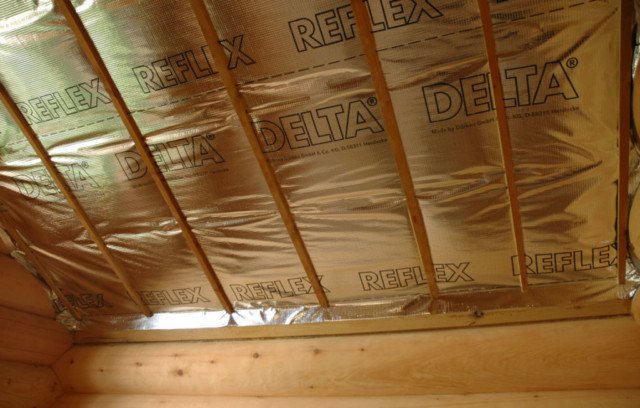

How to make a floor vapor barrier? The installation technology depends on the design features of the bath. As a rule, a wooden flooring equipped with a drain hole is installed in the steam room, which can lead to significant heat loss.
The correct solution to the problem is a multi-layer floor with waterproofing, insulation and vapor barrier.
Work on the vapor barrier of wooden flooring is carried out as follows:
- A thin layer of liquid waterproofing is applied to wooden boards.
- Basalt wool is mounted on top.
- A vapor barrier material that is resistant to decay is laid on the insulating layer.
- Next, a concrete screed of the base of the required thickness is carried out and a decorative floor covering is laid - porcelain stoneware or tiles.
- A wooden flooring is laid on the lined base for the convenience of using the steam room.
Roof
In some cases, it is not enough to perform only the vapor barrier of the wall and ceiling surfaces, in order to provide protection against high humidity, it is necessary to take care of the vapor barrier of the roof.
For this, a special insulating membrane is mounted in the attic in the wooden floor of the bathhouse, on top - an insulating layer, on it - waterproofing.A counter-lattice is installed on the waterproofing layer, to which the selected roofing material is fixed.
Other premises
Whether it is worth performing vapor barrier in other bath rooms, the owner of the building decides on his own. If the wooden bath is not insulated from the inside and outside, then the vapor barrier can be excluded - the drying of the interior will be carried out thanks to the natural ventilation of the wood.
Brick, block and concrete buildings require vapor barrier installation. In this case, not only the material for insulation is subject to drying, but also the entire structure of the bath - walls, floors and ceilings.
Therefore, when installing the vapor barrier layer, additional waterproofing of the surfaces is provided.
Do-it-yourself installation of vapor barrier materials is technically simple, but requires a responsible approach and attention. Only in this case reliable and effective protection of the steam room from the destructive effects of moisture and hot steam is ensured.
We invite you to familiarize yourself with the height of the ceiling and shelves in the bathhouse and sauna
Ceiling vapor barrier is performed from the inside of the room. As an exception, areas are considered in which in the winter season the air temperature reaches -32 degrees. In such climate conditions, the vapor barrier must be installed on both sides.
The method of equipping the vapor barrier layer is determined by the properties of its surface, on which the material is fixed. You will definitely have to follow certain tips:
- Before equipping a vapor barrier on the ceiling, the entire surface is carefully sealed. Joints and places adjacent to chimneys and ventilation elements are necessarily processed.
- The vapor barrier lies between the insulation and the steam room.
- The layer should cover the entire ceiling area without the slightest crevices or gaps.
- The fixed material does not require sagging, but it is also impossible to pull it so tightly, because a rupture can form as a result of drops.
- During installation, the vapor barrier material is laid with an overlap of 10 cm. It is unacceptable to leave joints in the corners. There, only solid sheets are used to ensure that the overlap is of the highest quality.
- A perimeter allowance of at least 20 cm is required.
- Before installation, the ceiling surface is effectively cleaned of dust and dirt, and then dried properly.
Before installing all materials, you must thoroughly familiarize yourself with its main features and take into account the advice of qualified specialists in this field.
How to properly insulate the ceiling in a bath?
Your own country house cannot do without a bath. It must be mandatory. Having decided on its construction, it is necessary to clarify all the nuances of ceiling insulation. Correctly executed thermal insulation will reliably retain heat, which will make it possible to save money on energy resources: coal, wood, gas, electricity.


The bulk of the owners of country houses prefer to build on their personal plot, the so-called Russian baths.
Such objects are erected from the following materials:
- solid and rounded logs;
- profiled timber and rectangular section;
- ordinary planed boards.
For the bath, coniferous wood is more often chosen. This is due to their pleasant smell and medicinal properties. The complete facility consists of three rooms: a dressing room, a steam room and a washroom.
The choice of thermal insulation
- Expanded polystyrene. In addition to the proper thermal insulation properties of this material, it has a high level of sound insulation. Plates are laid on the waterproofing end-to-end. To seal the joints, the gaps are filled with construction foam, and then glued with tape.
- Polyurethane foam. This material differs from expanded polystyrene in that it does not support combustion. The other characteristics are the same. Produced in panels and small blocks.Thanks to this, they can be laid in any hard-to-reach places.
- Foam concrete. When insulating the ceiling with this material, flat panels with a thickness of 30 mm are used. Foam concrete is all covered with pores. Thanks to this and the thin layer, the material has a low weight, but high thermal insulation qualities.
- Expanded clay. It is the best bulk thermal insulation material. It's so light it doesn't even sink in water. It is poured onto the outside of the wooden ceiling of the bathhouse and covered with foil.
Mineral wool
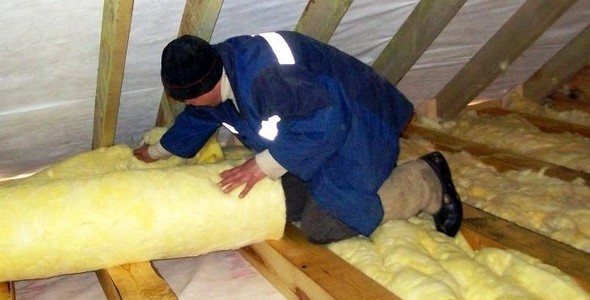

Mineral wool is classified into the following groups:
- Stone. Produced from molten rocks.
- Glass. It is based on fiberglass made using innovative technologies.
- Slag. Produced from blast furnace slag. Has astringent properties.
Foamed glass
This thermal insulation material is unique. It is made from glass and carbon. The main characteristics are the following:
- It does not absorb moisture as it is water-repellent.
- Does not burn.
- Differs in increased wear resistance and durability.
- Consistently high thermal insulation qualities are maintained throughout the entire period of operation.
- Foamed glass is resistant to mechanical stress and deformation. As a heater for ceilings, it is used on any objects. It is laid on any surface (wood, concrete, metal).
All of these materials are environmentally friendly and harmless to human health. They do not emit toxic and other harmful substances. They are ideal heat insulators for baths and other facilities.
Reliable protection against heat leakage from the bath is created as follows:
- From below, the ceiling is covered with a vapor barrier material. For this, aluminum foil is used.
- On top of the vapor barrier, or rather, on the outside of the ceiling (in the attic), a thin layer of clay is laid, and a heater is placed on it.
- Mineral wool, expanded clay or other thermal insulation specified in the list can be used as thermal insulation material.
- A cement-sand screed is sometimes placed on top of the insulation, but this can not be done. This is an unnecessary expense of money.
What material for a bath, ceiling and thermal insulation is better, no one knows for sure. Each owner of a personal plot chooses materials and type of construction based on their own preferences.
In total, there are three types of ceilings created in a Russian bath:
- Wall-mounted. They are made on objects no more than 2.5 meters wide.
- Hemmed. In this case, the width of the bath does not matter.
- Panel. In the construction of the ceiling, fiberboard or PVC panels are used here.
Today, many insulate the ceilings in their own baths on their own. This allows you to save a significant part of your money and keep yourself busy with interesting work.
Features of "Penofol", foil vapor barrier for the attic
If you need a foil vapor barrier for the attic, then you may prefer Penofol, which is based on a material with a thickness ranging from 0.2 to 1 cm. The thickness of the foil is 20 microns. It is important to take into account the reflection coefficient, it is equal to 97%.
On sale you can find material for use in harsh climates, in this case the thickness of the main layer will be 40 mm. The foil layer also creates a barrier to heat transfer due to polyethylene foam, which has a huge number of pores filled with carbon dioxide and air. Penofol can be operated independently or in combination with other heat-insulating materials. It is especially useful if it is necessary to insulate the surface and not lose the useful area of the room.
Is it necessary to insulate and vapor barrier a bath?
Each owner of a steam room or anyone who is just going to acquire one has a natural question about whether heat and vapor insulation of this room is needed.Arguments against it can be the fact that not so much time is spent in the bath, as well as the fact that it is cheaper to carry out additional heating than to waterproof the bath and insulate it.
To specialists, such arguments will seem ridiculous. Any builder will say that the vapor barrier of the walls and ceiling in the steam room will save you time and resources spent on heating the room. In addition, these additional works will significantly increase the operating time of the bath, regardless of what materials it is built of.
It should be noted that the vapor barrier of the ceiling and walls cannot be carried out separately. In addition, vapor barrier implies that insulation will also be performed and vice versa - individually, these processes will not be effective.
Additional solution for the attic: "Ondutis R Termo"
This material is used for thermal insulation of metal and wooden structures. When insulating an attic space or when installing a roof in a residential attic, the film allows you to keep warm and reduce heating costs.
The water resistance of this vapor barrier is 1000 mm of water column, as for the minimum vapor permeability, then this parameter is less than 10 g / m2 per day. The material calmly undergoes temperature drops ranging from -40 to +120 ° C. When considering strength, attention should be paid to breaking load, which is 150 N along and 130 N across. This indicates that this foil film is capable of supporting the weight of an adult.
Materials for hydrizolation
It is possible to prevent heat loss through the ceiling and walls of the steam room with the help of modern building materials, or with those materials that our ancestors used for the same purposes. The latter option is becoming more and more popular due to the desire of the population to use materials and technologies that are environmentally friendly and harmless to human health.
Our ancestors carried out the vapor barrier of the ceiling and walls using the following materials:
- red moss;
- cuckoo flax;
- flax fiber;
- tow.
Red moss and cuckoo flax were used to caulk the gaps between the individual ceiling elements. They have good thermal insulation properties and prevent the formation of mold and bacteria that cause decay. Linen and tow was used to upholster the ceiling.
Do-it-yourself bath ceiling waterproofing
It is quite easy to finish the walls and ceiling with vapor barrier, even without any experience in construction or repair. Therefore, everyone can carry out this operation.
This will require simple tools:
Sheet materials, such as film, paper, cardboard, are attached to the ceiling with a stapler or pressed with bars.
The lining or other finishing wood is fixed with dowels, having previously drilled holes in the walls and ceiling.
The clay is applied with a spatula directly onto wood or insulation. They are pre-primed to prevent mold and to improve adhesion to clay.
Vapor barrier for a bath on the ceiling
The construction of a bath in the houses and dachas of a modern person is not uncommon. If you took up the construction of such a building, it is likely that you will be faced with several tasks that will need to be solved. One of the pressing issues that are most often of interest to those who want to get a bath is a vapor barrier for a bath on the ceiling.
Such a room can be attributed to the number of buildings with special arrangement and rules of use. Among the essential properties of a bath is the ability not to let through, to retain heat in the room. This is an important condition for a bath, since it is the vapor barrier that will create the desired microclimate in the room.And also the ability to not let heat through will affect the durability of the structure. Provided that the vapor barrier is not done correctly, steam will leave the room, and moist heated air can deform the ceiling. Incorrectly made thermal insulation will lead to the fact that you will spend more time and fuel heating the bath, and as a result, the operation of the premises will become impossible. Therefore, the insulation of the ceiling and the vapor barrier of the bath are important aspects in the design and construction of such a room.
How to properly put a vapor barrier on the ceiling of a bath?
Next, we will consider the step-by-step process of laying the vapor barrier and get acquainted with the advice of experts on how to properly put the vapor barrier on the ceiling of the bath. Previously, experts advise paying attention to the type of roof, namely the presence or absence of an attic. In the event that there is an attic or an attic in such a room, the ceiling will let in wet steam much less, but this does not mean that you can not do vapor barrier at all. As a rule, the same materials are used to insulate the ceiling with the attic, but it is recommended to cover the boards from the side of the roof with clay.
Finding out which vapor barrier is the most effective for the ceiling of a bath is not so easy. We offer the most reliable methods.
Option 1
- The wooden ceiling is sheathed with wooden boards, the thickness of which is at least 5 cm. A vapor barrier made of foil or thick cardboard impregnated with linseed oil is laid on top of the boards.
- Then the ceiling is covered with clay, after which they begin to dry out thermal insulation.
- Next, we proceed with the installation of insulation. As a material for insulation, you can use mineral wool, expanded polypropylene, expanded clay, etc.
- Fasten the plank flooring on top of the insulation.
Option 2
- Grooved boards are hemmed to a square beam.
- The boards must be pre-treated with linseed oil in order to make the material water-resistant.
- On top of the ceiling beams, boards must be laid, between which the gaps must be processed.
- On top of the board, you need to glue it over with roofing material, foil or polyethylene.
One of the important steps before laying a vapor barrier on the ceiling in a bath is antiseptic prophylaxis. Processing wood materials will allow you to protect yourself from further problems. Choosing insulation, you can use special expensive materials, as well as natural improvised means - dry earth, clay.
Types of vapor barrier
Vapor barrier of the ceiling and walls in the bath
Since the laws of physics have not yet been canceled, it means that everything in this world remains as before. Everyone knows from the school course that warmth always rushes upward. For a steam room in a bath, this is doubly relevant. If the steam and thermal barriers do not work well, then all heat and moisture losses will pass through the ceiling.
And if the ceiling is insulated with mineral insulation (rolled basalt wool, plate mineral heat insulators), what will happen to them? It's just that the insulation, saturated with moisture, will stop working. There will be practically no effect from its use. You can safely proceed to dismantle it and engage in a complete replacement of the insulating layer. This work is thankless, so it is better not to make gross mistakes during the construction of a bath and a sauna.
Here is the second negative point, if the vapor barrier of the ceiling of the bath is not done correctly. All wooden structures, and these are floor beams, a rough ceiling, roof elements will be subject to premature decay. High temperature and high humidity have a beneficial effect only on humans, but for a tree this is considered an aggressive environment. Roof and ceiling repairs are unequivocally secured.
Installation of vapor barrier with a furniture stapler
Recently I witnessed a neighbor rework all the ceilings in a newly built bathhouse.The builders, trying to hand over the object on time, simply did not make the vapor barrier of the ceiling in the steam room. All expensive URSA roll insulation had to be thrown away.
Literally for 3-4 times of using the steam room, he was saturated with moisture to such an extent that water simply dripped from the ceiling. It is good that all the work to correct this gross mistake was made almost immediately, and the tree did not have time to be badly damaged. The situation is unpleasant - money and time are down the drain.
Our grandfathers widely used clay as a vapor barrier. An excellent hydraulic lock is obtained from it. Everything is natural, no chemistry. They simply knead the greasy clay with water and add wood shavings to this "porridge". The shavings act as a bonding element. During drying, the clay cracks a little.
Another old way: From the side of the attic, dry leaves are laid out on the ceiling. Sawdust is poured on top, and dry earth is already on them. This option has also been tested for more than one dozen years and works well. But today, natural materials are rarely used. The industry offers a very large selection of excellent vapor barriers.
Foil for a bath
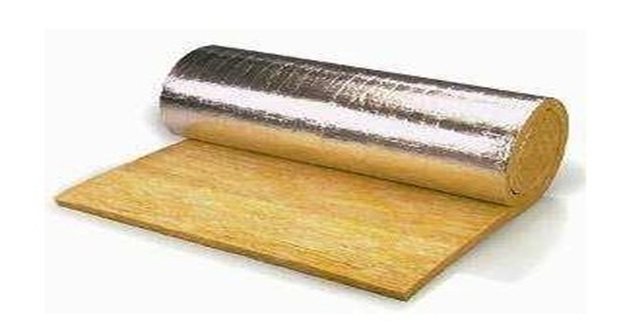

Firstly, these are vapor barrier films. Not to be confused with thermal insulating membranes, which work on the principle of "breathable waterproofing". Vapor barrier films create a reliable vapor barrier, especially if reinforced and foil films are used. For example, you can use "Ondutis R Thermo", "Izospan", "Penotherm" or other similar material. The choice is very large.
Secondly, plain aluminum foil also works great as a vapor barrier. But it is difficult to apply it in terms of installation: gusts should not be allowed and you need to carefully monitor the integrity of the material. All seams are carefully glued with special mounting tapes (foil tape). The work is scrupulous, but a simple furniture stapler will help you quickly cope with it.
Foil tape
Thirdly, ordinary cellophane can cope well with the function of a vapor barrier. Nevertheless, I rarely use it in this area. Roofing material or glassine also perfectly retain moisture, but the vapor barrier of the ceiling of the bath from it is not suitable. During high temperatures, harmful volatile substances are released, and this is not at all good for health.
Fourthly, you can use a cheaper option. This is kraft paper. That is, high-strength cardboard, most often impregnated with linseed oil or another analogue. Such a vapor barrier is best used in a break room, where there is no high concentration of moisture.
What a vapor barrier is needed for, now it is clear, they have also decided on the materials. Now about the most important thing - on what principle to carry out the installation? If you look at the section of the ceiling of the steam room, you can distinguish the following components:
- The first, lower layer is the interior decoration of the bath itself, most often the lining.
- The lathing is made of wooden blocks, on which the lining is fixed. Consequently, there is also a ventilation gap of 1.5 - 2.5 cm, which is always necessary for the best "thermos effect".
- A layer of vapor barrier, which is attached to the ceiling and falls a little 10-15 cm on the walls. For a steam room, the ideal choice is "Penotherm" or another analogue. Quick and easy installation with a furniture stapler, as well as an amazing vapor barrier due to foil is provided to you. The "Penotherm" strips are attached with an overlap of 10-12 cm, and the joints are glued with a special metallized tape. The main thing is not to leave gaps through which the steam will escape.
- Directly the ceiling of the bath. A vapor barrier is attached to it from below, and a heat insulator is placed on top.
- Insulation. As a rule, these are mineral mats or roll materials. Typical examples: Izover, Ursa, and so on. The choice, as always, is yours. The thickness of the insulation depends on the climatic zone where you are building the bath. Usually the manufacturer always indicates the thickness of the material and the temperature of use.It is possible to use sheet polystyrene foam or extruded polystyrene foam. These materials are not afraid of moisture and perfectly retain heat. The use of ecowool will be interesting, but quite reasonable. In the role of insulation, as mentioned above about the vapor barrier, you can use clay, dry leaves, sawdust. Expanded clay is often used. It is a natural excellent heat insulator. But without a vapor barrier, it is not advisable to use it, since it strongly absorbs moisture, therefore, it loses all its valuable properties.
- It will be better if the insulation is closed with a "breathable" waterproofing membrane. Moisture that has accidentally got into the insulation will evaporate through it, and atmospheric condensate or other "accidental" water will not penetrate here. Omitting this point, in principle, nothing terrible will happen. Insulation not covered with a membrane will do its job well.
- If a bathhouse with an attic is being built, then clean floors are laid. And if there is no second floor, then the insulation is simply closed with improvised materials. The main thing is to ensure the integrity of the insulating layer.
We offer you to familiarize yourself with the Frame bath with your own hands (photo)
A well-made ceiling vapor barrier ensures reliable heat retention. It should be noted that this vapor barrier must be precisely vapor-tight, otherwise all efforts will be in vain. At the same time, don't forget about ventilation. After using the bath, it is necessary to ventilate all rooms by opening windows and doors. And always remember that the vapor barrier of the bath ceiling is an important point in insulation. Don't forget about it.
I hope that someone benefited from the information. That's all. See you soon on other blog pages. Good luck!
Quote of wisdom: A person achieves something only there, where he believes in his own strength.
Not all products are used for insulation. Plastic products will deform from high temperatures. If you use plywood or fiberboard, then from the hot air they will begin to expand and change shape, accumulate moisture. These products will definitely not work. The best way is to finish with several layers:
- The first is to use an insulating material that prevents water from entering.
- Place a second layer of insulation (for example, mineral wool).
- The third level is aluminum foil.
Such "layering" keeps heat well and does not allow steam to escape for a long time, therefore heat losses are reduced.
Heaters can be divided into the following types:
- fibers;
- plates;
- blocks;
- wall slabs;
- backfill.
And depending on the composition, they are distinguished:
- Organic, such as ecowool.
- Inorganic - mineral wool.
- Expanded polystyrene.
- Other heaters such as technovent and technoblock.
A quality insulation material should be:
- heat-resistant so that no fire occurs;
- environmentally friendly (should not emit harmful vapors);
- "Breathe" so that water does not collect and condensation does not accumulate;
- resistant to moisture.
First you need to find out what kind of roof you have - with and without an attic. Structurally, the options for buildings from logs and from panels are similar. They have:
- isolation from steam;
- insulation;
- filing from boards;
- beams
- sheathing.
There is a vapor barrier on the wall and ceiling, then a timber, then a heater. You can use basalt wool in the form of mats, then again a layer of vapor barrier, then a bar and fixing the lining. As an option, respectively, a beam of 40 mm and a heater of 40 mm. You don't need too much insulation. Overruns of materials in this case are inappropriate.
On the ceiling, the structure must be made with a slope in order to collect condensation. As a result, a space remains under the lining, allowing the bath to dry out. The power of a modern stove is enough to warm up a bath well. Ideally, the steam room is dried by ventilation and a fuel-recycling oven.
If there is no attic, then you need to perform additional steps:
- smear the entire lining with a layer of clay up to two centimeters to reduce heat loss;
- sprinkle the coating with a mixture of cement and wood chips (you can slag up to 15 cm - this measure helps to eliminate condensation).
If you want to make a properly working steam room, then you first need to take care of the vapor barrier (not waterproofing with vapor permeability) of the ceiling to create a vapor pocket to the level of the upper edge of the door to retain steam and create humidity in the region of 60%.
The vapor barrier of floor beams and the entire ceiling pie is already a consequence, not a cause. Ceiling insulation without foil is completely irrelevant, since the steam room will not perform the functions that are assigned to it. If you need a steam bath, and not a sauna, you will have to open the casing and deal with the vapor barrier of the ceiling. If this is not done on time, then after a season or two you will have to replace the damp insulation and rotten beams.

